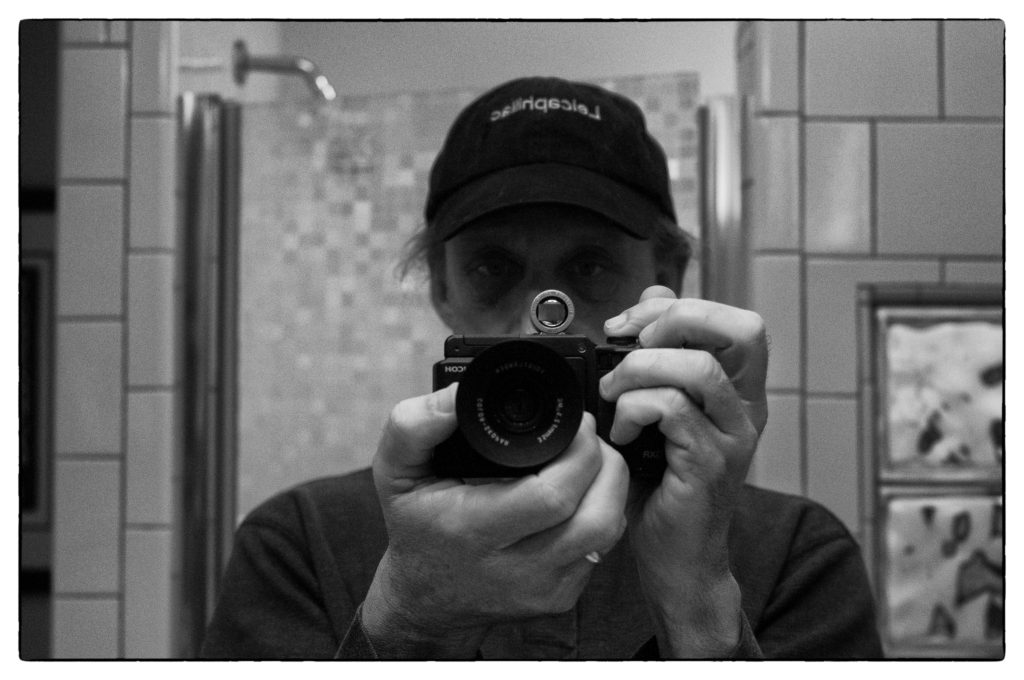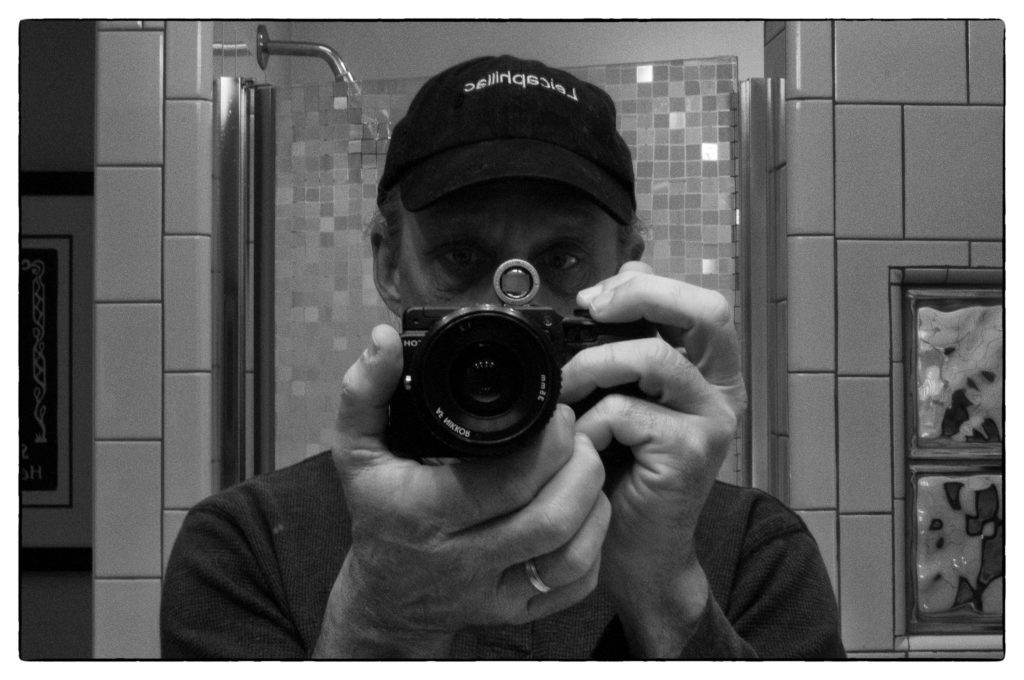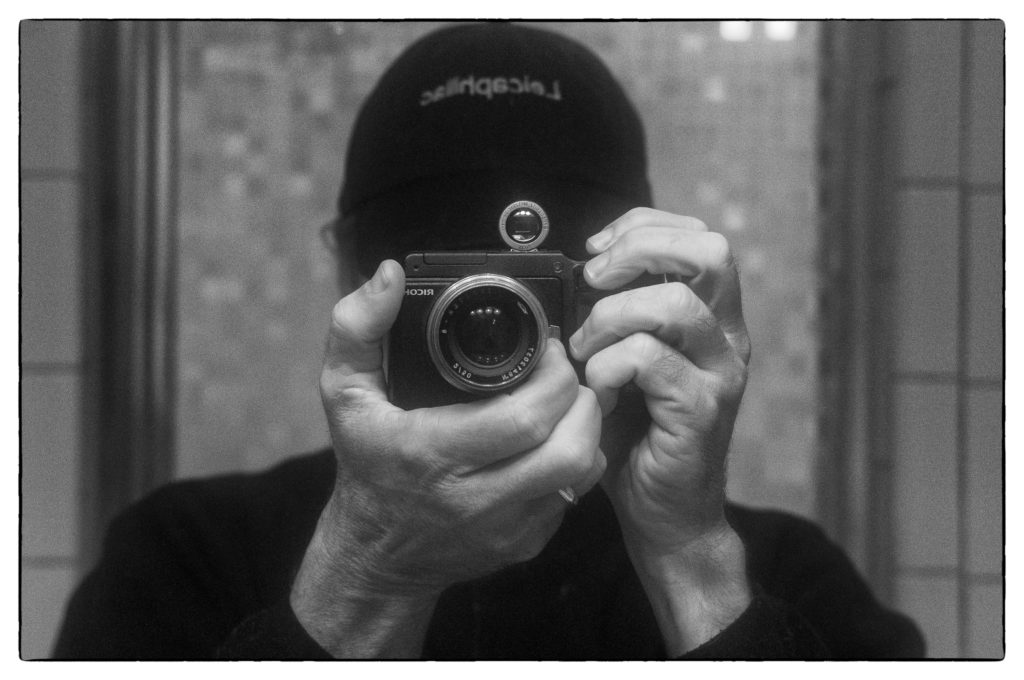The Summilux 50mm f1.4 in LTM. Perfect for my IIIg
My wife claims I suffer from SAD – Seasonal Affective Disorder. SAD is a type of depression that’s related to the change in the season — symptoms typically start in the fall and continue into the winter months, sapping your energy and making you feel moody. It’s why I can’t live in places like Amsterdam where you never see the Sun; I go nuts after a month or two of grey, skuddering skies. To support this she notes that every winter, once the sun gets low, I tend to put on my PJ’s and spend an inordinate amount of time watching dark, depressing Swedish movies with the blinds closed. I’ll occasionally walk the dogs in my bathrobe, which embarrasses her to no end. I’m generally lethargic and slow-witted, and my discretionary bourbon spending tends to increase.
I never really thought about it that way until she mentioned it to me, but I suppose she’s right. I have been feeling uninspired lately, especially in thinking of things to write about here. You can only say the same things so many times before it becomes stale. So, I’ve decided to do a “lens test,” you know, post a bunch of pictures from various lenses under marginally controlled conditions and then make sweeping judgments about them.
What motivated me to do this was this: for some reason, I’ve started feeling an urge to buy a new LTM Summicron for my IIIg, and I thought that maybe this would finally put a stop to my recurring, admittedly irrational desire to own at least one top-flight Leica lens, and a Summicron /lux- either the LTM 35mm ASPH or the LTM 50mm f1.4 Summilux- seemed the natural choice for the IIIg – the ultimate Barnack Leica paired with the ultimate Leica lens. My sense is it wouldn’t make a bit of difference to my photographs (let me rephrase that – I know it won’t make a bit of difference). My opinion is this: unless you’ve got a really bad copy of a lens – super sloppy tolerances or misaligned elements, uncoated element surfaces, scratched or full of fungus – most fixed focal length lenses from the 50’s onward give more than acceptable results, and many ostensibly “cheap” lenses can give results comparable to Leica lenses costing 10X- -100X as much. After all is said and done, a $2000 Summicron or Summilux won’t give me anything my Industar or Nikkor or VC can’t.
*************
What I did was this: I found every 35mm and 50mm lens I had that was capable of being mounted on an M-Mount camera, in this instance a Ricoh GXR with A12 M-Mount, and shot the same photo with it, same lighting, same f4 f-stop, same 1600 ISO. I chose f4 as the demonstrable f-stop because it was the first partial aperture each of them shared and it’s an aperture that’s wide enough to still give some sense of the character of the lens. Too lazy to go outside and find appropriate fence posts (why must every lens test involve fence posts?), I chose a bathroom mirror selfie; it offered a good gradation of tones, the tiled wall behind me, with its straight vertical and horizontal lines, might give some sense of any lens distortion and there’s also enough sparkly stuff in the shower door to highlight bokeh. Perfect. As for post-processing, they were all shot as RAW and converted to jpegs in LR, where I also applied the exact same levels of marginal structure adjustments and sharpening, which is what I’d do with most any photograph I edit. Of course, all of the above decisions are completely arbitrary and will affect the results in unknown ways, which is why informal internet lens comparison tests like this one are always problematic.
35mm lenses
The lenses tested were, in order of presentation – a 35mm f2.5 LTM VC Color Skopar Classic; 35mm f2.5 LTM VC Color Skopar Pancake; a W-Nikkor 3.5cm f2.5 for Nikon S; an AF Nikkor 35mm f2 for Nikon F; a manual focus Nikkor 35mm f2.8 for Nikon F; and a manual focus Nikon E series 35mm f2.5 for Nikon F.
 Voigtlander Color Skopar Classic 35mm 2.5
Voigtlander Color Skopar Classic 35mm 2.5
35mm f2.5 LTM VC Color Skopar Pancake
W-Nikkor 3.5cm f2.5
AF Nikkor 35mm f2
Nikkor 35mm f2.8
Nikon E series 35mm f2.5
*************
50mm lenses
Lenses tested were, in order of presentation – a Russian made LTM Industar-22 5c.m f3.5 collapsible; a Russian made LTM Industar-26M 5.2 cm f2.8; a Russian made LTM Jupiter-8 5c.m f2; a manual focus Nikon Series E 50mm f1.8; and finally the current version AF Nikkor 50mm f1.8.
LTM Industar-22 5c.m f3.5 collapsible
LTM Industar-26M 5.2 cm f2.8
LTM Jupiter-8 5c.m f2
Nikon Series E 50mm f1.8
AF Nikkor 50mm f1.8
*************
Conclusions? With the exception of the AF Nikkor, all of the 35’s look pretty much alike. For some reason, the DOF is different on the AF Nikkor than the other lenses, why I have no idea. I see some marginal differences in contrast and how the lens deals with light fall-off behind its plane of focus, but that’s about it. You can easily tweak contrast in LR. Interesting because, while there’s not a Summicron in there for comparison, the VC Color Skopars, which will cost you +/- $350 used, are considered to be excellent optics, not far removed from the traditional 35mm Summicron, as is the W-Nikkor 2.5, at about the same price used, made for the Nikon S cameras. The other Nikkors are super cheap (+/- $200) while the E Series Nikon can be found for $30 used. I’ve always thought the Nikon E Series lenses, derided by purists when they first appeared in the 70’s because they contained some plastic parts, are incredible bargains, the entire line being excellent.
As for the 50’s, they all look pretty much alike again, with the exception of the Jupiter-8, which is markedly softer than the others. With all of the FED LTM lenses, sample variation is the norm. Both Industars look great at f4, indistinguishable from the excellent AF Nikkor 1.8 which Nikon enthusiasts rave about. I paid about $20 each for the FED lenses and the Series E and $80 used for the AF Nikkor.
Would a $3500 Summilux be much better? I doubt it. It may have better MTF charts, feel smoother in operation, make you feel special etc etc, but whatever marginal increases in optical performance it might possess mean little or nothing in practice. It sure is a beauty though; no doubt about it. Is the enhanced pleasure you’ll presumably get by toting it around on your IIIg instead of a 20$ Jupiter worth the extra $3475? Only you can answer that, although I don’t begrudge your decision. It’s your money.
The larger conclusion is that “comparison tests” of lenses are gimics, interesting to read, fun as an intellectual exercise, but of no real value if what you’re looking for is an objective evaluation of the critical optical merits of a given lens and its practical implications for use.
Suffice it to say I won’t be buying that Summilux.
- I’ve posted slightly larger jpegs that you can click on and open for further examination if you’re that sort of person.
Views: 2221














